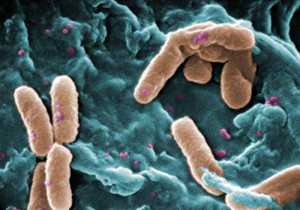04 Mar Genomic Testing Confirms Contaminated Soap Did Not Impact Patients
MedicalResearch.com Interview with:
Dr Laurence Senn, médecin associée
Service de médecine préventive hospitalière
Mont Paisible
Lausanne
MedicalResearch.com: What is the background for this study? What are the main findings?
Dr. Senn: Pseudomonas aeruginosa is a ubiquitous environmental bacterium that can cause infection in patients severely ill, and is thus a major cause of nosocomial infections in intensive care units. During an environmental investigation on potential reservoirs of P. aeruginosa, the liquid hand soap was found highly contaminated with this pathogen. The fact that unopened soap containers were found contaminated with P. aeruginosa proved that the contamination occurred during product manufacturing. Contaminated batches had been used in our hospital over the previous 5 months.
In order to evaluate the burden of this contamination on patients, our infection control team conducted an epidemiological investigation combining two molecular methods. First, we analyzed with a classical molecular typing method all P. aeruginosa isolated from patients during the period of exposition to the contaminated soap. Secondly, we targeted the analysis on some isolates sharing the same genotype that the one found in the soap with a modern, recently developed tool which consists in sequencing the whole genome of the bacteria. This method allowed us to have the “fingerprint” of each isolate. Our investigation ruled out any impact of the contaminated soap on patients.

This colorized version of PHIL 232 depicts a scanning electron micrograph (SEM) of a number of Pseudomonas aeruginosa bacteria.
MedicalResearch.com: What should clinicians and patients take away from your report?
Dr. Senn: Classical molecular typing methods have an insufficient discriminatory power to incriminate a specific source of infection such as the contaminated soap in our study. Only with the use of whole genome sequencing we were able to have a clear answer on its potential role to infect hospitalized patients.
MedicalResearch.com: What recommendations do you have for future research as a result of this study?
Dr. Senn: Combining classical molecular typing with whole genome sequencing allows conducting large epidemiological investigations with unambiguous results. This is clearly a progress and offers new perspectives towards a better understanding of transmission of nosocomial pathogens.
MedicalResearch.com: Is there anything else you would like to add?
Dr. Senn: Hand hygiene carried out with alcoholic solution instead of hand washing with soap for over 15 years probably explains why the contaminated soap had no impact on patients. However such additional reservoir of Pseudomonas should not be tolerated in hospitals where high risk patients are present. In the European Community, the microbial quality of cosmetics is regulated since July 2013. Among microbiological criteria, the absence of P. aeruginosa must be demonstrated. These new regulations should lead to safer cosmetic products, in particular those used in hospitals.
MedicalResearch.com: Thank you for your contribution to the MedicalResearch.com community.
Citation:
Hand soap contamination by Pseudomonas aeruginosa in a tertiary care hospital: no evidence of impact on patients
Blanc, D.S. et al.
DOI: http://dx.doi.org/10.1016/j.jhin.2016.02.010
Journal of Hospital Infection , Volume 0 , Issue 0 ,
Published Online:February 29, 2016
Note: Content is Not intended as medical advice. Please consult your health care provider regarding your specific medical condition and questions.
Dr Laurence Senn (2016). Genomic Testing Confirms Contaminated Soap Did Not Impact Patients
Last Updated on March 4, 2016 by Marie Benz MD FAAD
